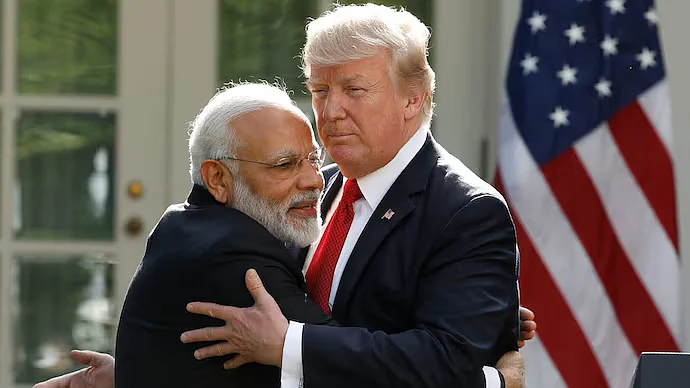Lucknow: The reimposition of a 25% tariff by U.S. President Donald Trump on a broad range of Indian goods has sent shockwaves through Uttar Pradesh’s export ecosystem, particularly affecting Agra — a key hub for footwear and handicrafts.
The decision, which comes after a brief reprieve in July following an earlier threat in April, has reignited uncertainty among exporters. Agra alone exports over ₹5,000 crore worth of leather footwear every year, much of it to the United States. The sudden hike in tariffs has led to the stalling of export orders that had only recently begun to recover.
“This move has thrown us into crisis again,” said Prahlad Singh, a prominent footwear exporter from Agra. “After the collapse of the Soviet Union, we shifted to the U.S. market. Now, Trump’s decision has put our survival at stake. Revenues are already down by at least 10%.”
Agra’s handicraft industry — exporting nearly ₹1,200 crore worth of marble inlay, brassware, and stone artifacts annually — is facing a similar crisis.
“A 10% tariff we could manage, but 25% is crippling,” said Rajat Asthana, President of the Handicrafts Exporters Association. “We have spent years building a reputation in the U.S. market. If buyers start pulling back, regaining their trust would not be easy.”

Ripple Effect Across Uttar Pradesh
The impact of the tariff is not limited to Agra. Uttar Pradesh, one of India’s top exporting states, is deeply tied to the U.S. market through its leather, garment, handicraft, brassware, and carpet industries.
According to the Uttar Pradesh Export Promotion Council, carpet exports from UP to the U.S. surged from $323 million in 2020 to $718 million in 2021. Cities like Bhadohi and Moradabad are global names in carpets and brassware, much of which heads to American homes.
“U.S.-bound goods account for nearly 21% of UP’s total exports, valued at around ₹38,000 crore,” said Mukesh Singh, Chairman of the UP Coordination Committee of the Indo-American Chamber of Commerce. “This tariff will derail our export momentum and hit GDP growth. It is more a geopolitical move than an economic one — but MSMEs and artisans here are paying the price.”
In Agra’s industrial pockets and artisan colonies, anxiety is palpable. Family-run export businesses, many with decades of heritage, are suddenly unsure of the future.
“If fresh orders stop, artisans will abandon the trade. We’re not just losing business, we’re losing a cultural legacy,” said Prahlad Agrawal, President of the Agra Tourist Welfare Association.
D.S. Verma, Executive Director of the Indian Industries Association (IIA), admitted that the situation is serious but believes in the resilience of local businesses. “Yes, this is a setback, but Indian entrepreneurs are resilient. We’re already exploring alternative markets to absorb the shock.”
As trade tensions continue to rise between Washington and New Delhi, exporters across UP are hoping for urgent diplomatic intervention before the damage to business, livelihoods, and India’s cultural exports becomes irreversible.
Key Figures at Risk:
₹5,000 crore in annual footwear exports from Agra
₹1,200 crore worth of handicrafts from Agra to the U.S.
$718 million in UP’s carpet exports to the U.S. (2021)
21% of UP’s total exports are U.S.-bound (approx. ₹38,000 crore)
25% tariff threatens MSMEs, artisans, and long-term trade ties










